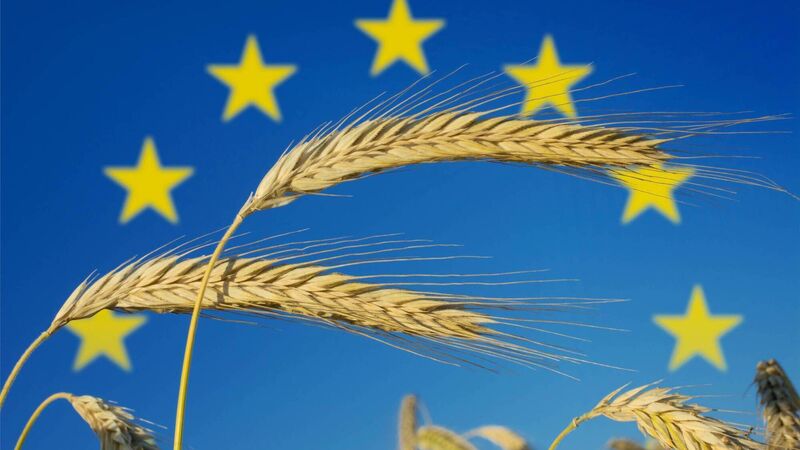Losing CAP could cost EU 250,000 agri-food jobs and €8bn in trade losses, report shows

The NoCAP scenario is also predicted to increase net global greenhouse gas emissions by 8.2 Mt, mostly due to food imports from areas less emission-efficient than the EU.
EU agricultural output can increase 2.7%, food prices will be lower, and the EU's trade balance will improve by €2.7bn, if the Common Agricultural Policy (CAP) favours productivity and competitiveness, said the EU's Joint Research Centre (JRC) scientific service in its latest report.
Agricultural greenhouse gas emissions could increase 0.5% in the EU but fall globally (due to reduced food imports). A 1.4% increase in the EU's nitrogen surplus is likely.
There would be minimal overall impact on employment.
Shifting CAP support instead in the next 25 years towards more environmental and climate-focused interventions would cut EU greenhouse gas emissions 1.7%.
However, global agricultural emissions might increase by 0.2%. EU nitrogen surpluses could fall 2%. The more environment and climate-focused CAP in the next 25 years could create 90,000 new jobs, envisaged the JRC.
Agricultural output would decline by 4%, food prices would rise, and imports increase, worsening the EU trade balance by €1.8bn.
According to the Scenar2040 study by the Joint Research Centre, such are the choices for the EU policymakers for whom the JRC provides independent, evidence-based knowledge and science.
However, the JRC also advises on other options, such as the EU operating without any Common Agricultural Policy (albeit an option incompatible with EU treaties).
Such an option would have various negative consequences, according to the JRC.
Without a CAP, it is not anticipated greater flexibility would compensate farmers for the significant loss of CAP payments. Farm income would decline by about 11%, but as much as 21% for smaller and more vulnerable farms.
Overall EU food production would fall by 5%. Food prices would rise — worst for the most vulnerable households — and agri-food employment would drop by about 250,000 workers.
Crop production would fall about 5%, EU milk and dairy production would fall 3%, and total meat production by 7.1% (beef 13.2%, sheep and goat meat 13.4%, pigmeat 7.4%, and poultry meat 3.9%).
Agri-food exports out of the EU would fall by €3.4bn, and imports would rise by €4.7bn.
EU food price increases would be highest for fruit and vegetables, rising 4%. Consumers in Bulgaria, Croatia, Greece, Latvia, Lithuania, and Romania would feel the strongest impact of more expensive food.
The economies of Bulgaria, Romania, and Greece would be most affected by scrapping the CAP, due to agri-food's more significant share of these economies.
The NoCAP scenario is also predicted to increase net global greenhouse gas emissions by 8.2 Mt, mostly due to food imports from areas less emission-efficient than the EU.
But the nitrogen surplus in the EU could decrease by 5%.
Without a CAP, an increase in the number and area of high-intensity farms and a decrease in farms and areas with low input intensity would be likely.
The JRC said the results of its scenario study underscore the CAP's importance as a stabilising force, supporting economic resilience, social cohesion, and environmental balance in the EU.
Scenar2040 does not endorse one CAP trajectory over the other. Instead, it says there are no “silver-bullet” solutions to navigate the complex trade-offs between economic viability, food security, and environmental protection.
But some EU leaders may make up their own minds when they see the JRC's budget projections for two CAP scenarios. Including the EU contribution and the member state co-financing, the total budget is expected to increase only 0.2% for a productivity- and competitiveness-focused CAP, but by 11% for an environment- and climate-focused CAP.
With or without a CAP, larger farms are likely to fare better. They would increase production by 2–3.4% if the CAP better supports productivity and investment, while smaller farms might see little or no increases.
With an environment- and climate-focused CAP, impacts would be negative for all farms, but less so for the largest farms.
Cheaper food with a productivity- and competitiveness-focused CAP scenario might be welcomed by Irish consumers, because the JRC envisages them and Slovenian consumers enjoying the best food price falls (about 1.2%). In general, EU consumers might see prices falling 2.7% for fruits and nuts, 2% for vegetables, roots and pulses, and less than 1% for cereals.
Ireland also features in the Scenar2040 study as the biggest loser of cereals production in the absence of CAP support. The area dedicated to cereals decreases by 2.5% across the EU in the so-called NoCAP scenario, but by 36% in Ireland — or by more than a million tonnes of grain in terms of yield — driven by a combination of reduced area, lower yields, and the removal of CAP payments.
This is in sharp contrast to an expected 2.4% Irish cereal production increase with a more environmental- and climate-focused CAP (albeit accompanied by an Irish reduction in oilseed production of as much as 31%).
Mainly due to increased feed costs, the removal of CAP payments is projected to knock back Irish milk production 5.5%, compared to a total EU fall of only 3%.
Reduced financial returns for EU land allocated to feed crop cultivation, leading to a shrinking supply of feed, could knock 7.5% off the total EU beef herd. The beef supply would be hit hardest in France, followed by Ireland, Germany, Poland, and Spain.
The EU's sheep and goat herd size could fall by 11.9%, but increase marginally in Ireland, France, and the Netherlands, due to higher productivity.
Farmland abandonment under the NoCAP scenario could be highest at 12% in Finland, followed by 6% in Cyprus and Malta, 5.6% in Latvia, 4.7% in Lithuania, and 4.6% in Ireland.
In Ireland's South-East and East, 124,000 hectares of farmland could be abandoned, plus 89,000ha in the Border, Midlands and West regions.
While the NoCAP scenario leads to a 4.9% reduction in the EU's nitrogen surplus, the only exception occurs in the south and east of Ireland, where the already relatively high surplus could increase due to more intensive grass and grazing.










